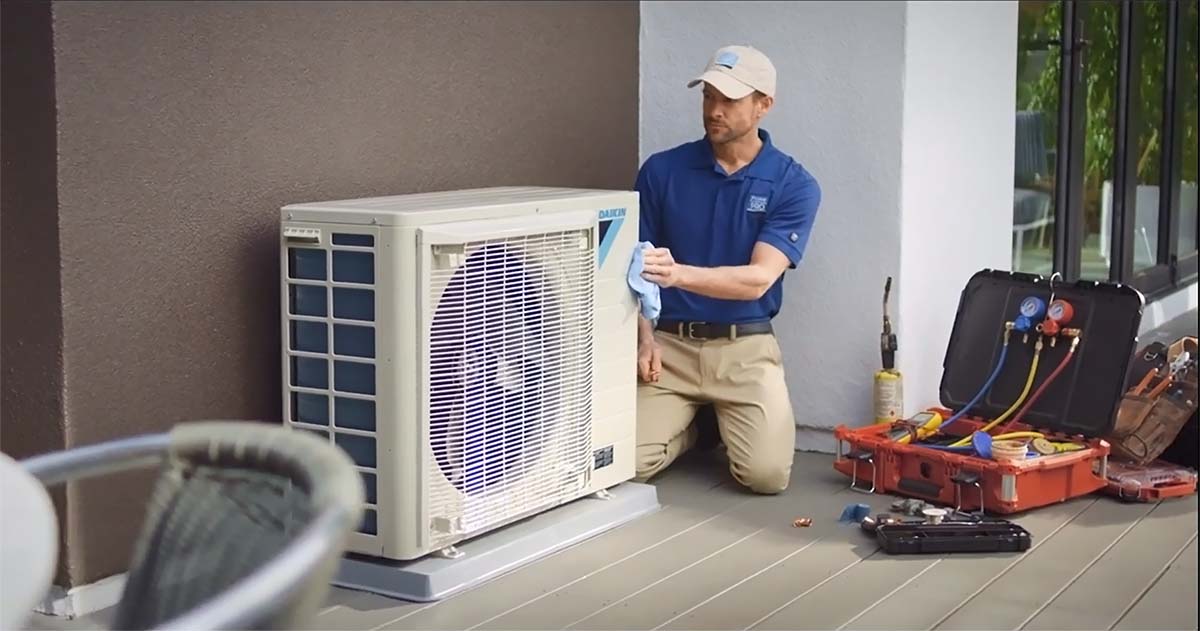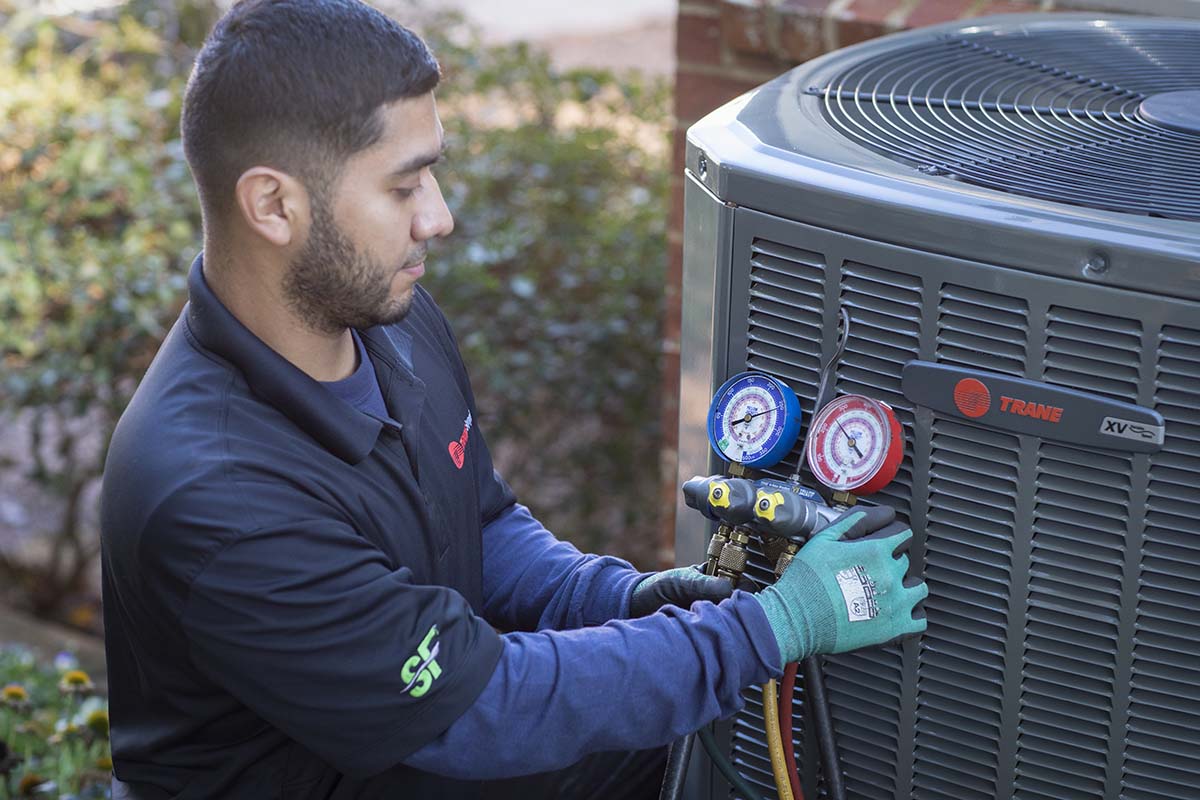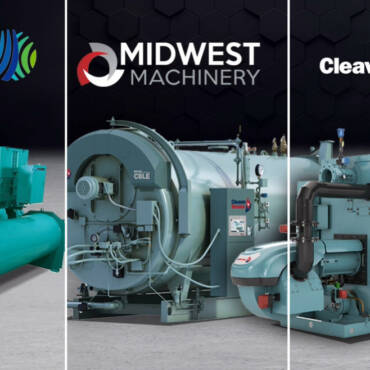✕
The HVAC industry is entering a new era due to the AIM Act, which mandated the phaseout of R-410A system production after December 31, 2024. As of January 1, 2025, manufacturers can only produce comfort cooling systems that use lower-GWP refrigerants like R-32 or R-454B, both classified by ASHRAE as mildly flammable (A2L). Consequently, OEMs are introducing a whole host of new A2L equipment in the first quarter of 2025, with more products scheduled for release later in the year.
The transition to A2L refrigerants brings new challenges and responsibilities for HVAC contractors and technicians. Proper training and adherence to best practices are essential to safely handle, install, and service these mildly flammable refrigerants. By following industry guidelines and leveraging tools designed for A2L systems, professionals can ensure safety, maintain compliance, and optimize system performance while supporting the industry’s shift to these new lower-GWP refrigerants.
New Residential/Light Commercial
A variety of new comfort cooling products utilizing lower-GWP refrigerants are entering the market. Midea, for example, is offering several A2L-compliant products in Q1 2025 that are designed for the residential and light commercial markets. This includes the Evox G3 heat pump system, which is available in sizes ranging from 1.5- to 5-ton units. Midea’s full lineup of ducted and ductless solutions will be available by the end of 2025.
“The Evox G3 incorporates environmentally friendly R-454B refrigerant, aligning with A2L requirements, while delivering high efficiency and performance in extreme climates,” said David Rames, senior product manager at Midea. “This heat pump system features Enhanced Vapor Injection (EVI) technology, which provides up to 100% heating down to -13°F and operational performance at -22°F, ensuring comfort in the harshest conditions.”
Rames added that the Evox G3 side-discharge configuration reduces installation space requirements, while modular air handling units enable easy transport and assembly in tight areas like basements or attics. Smart thermostats and wireless connectivity offer enhanced control and energy optimization, while features like coil protection and dual-fuel compatibility ensure reliability. In addition, he noted that multi-zone and ducted/ductless configurations offer flexible solutions for both retrofits and new installations.
Daikin has already brought numerous A2L products to market and is very close to completing the availability of all residential ducted products in all brands (Daikin, Amana brand, and Goodman), said David Palazzolo, director of residential product marketing at Daikin. The company has launched most of its ductless residential products as well.

FULLY STOCKED: Daikin is fully stocked and shipping R-32 products across the full range of residential unitary, ductless, and light commercial products. (Courtesy of Daikin)
“Residential products have been prioritized, but we also have much of our light commercial packaged rooftop products, from 3 to 12.5 tons, already launched,” said Palazzolo. “Some smaller, 3- to 5-ton VRV products have been launched, with the majority of the larger VRV products planned for late 2025 to early 2026 launch. Additionally, our single-phase residential package units will start launching in Q1 2025.”
All Daikin products use R-32 refrigerant, which Palazzolo describes as a proven, efficient, and user-friendly alternative that has been used around the globe for years.
Looking for a reprint of this article?
From high-res PDFs to custom plaques, order your copy today!
“We have also provided the capability for our contractors to field install a refrigerant detection system (RDS) into an existing non-A2L (R-410A) gas furnace, allowing a new R-32 designed evaporator coil and outdoor condensing unit to match with the existing, non-A2L (R-410A) furnace, potentially saving the homeowner from having to replace their existing gas furnace.”
Johnson Controls rolled out several redesigned and new A2L models for both residential and light commercial ducted systems in 2024. For residential, this included all entry-tier efficiency and rebate-tier air conditioners and heat pump models, like the York YH4 14.3 SEER2 heat pump, the York YH5 15.2 SEER2 heat pump, and the York HH8 18 SEER2 side-discharge heat pump, said Charles Hurd, director of residential product management at Johnson Controls.
“The YH5 features upgraded, two-stage operation on 2-ton or larger tonnage models and meets Energy Star certification requirements, optimal for regional utility rebates,” said Hurd. “The HH8 side-discharge heat pump offers premium, variable-speed operation and is optimized to meet 25C tax-credit eligibility, as well as many state and regional rebates in the U.S. when paired with an air handler or furnace. Additionally, we expect to launch the 16 SEER2 air conditioner and heat pump models later in Q1, which will meet the newly established CEE Tier 1 standards for 25C Federal tax credits, state-level IRA rebates, and regional utility rebates.”
Other residential products from Johnson Controls that launched last summer include air handler units and indoor evaporator coils, both redesigned to operate with R-454B, said Hurd. The new models are engineered for standard upflow, downflow, or multi-position configurations. Additionally, the new air handler units come equipped with factory-installed TXVs, RDSs, and high-efficiency, multi-speed ECM blowers for improved efficiency and comfort. Hurd added that Johnson Controls would continue launching its higher-efficiency R-454B outdoor equipment models and correlating high-efficiency indoor equipment and residential packaged systems throughout 2025.
Trane is entering 2025 with its complete lineup of re-engineered products that utilize R-454B refrigerant, said Mark Woodruff, senior product manager of residential HVAC at Trane Technologies. This includes a variety of one-stage, multi-speed, and variable-speed air conditioning and heat pump systems that are designed for higher efficiency, along with reduced energy costs and carbon footprints.
“Trane R-454B heat pump offerings provide a 4.5% increase in heating and cooling efficiency compared with R-410A models,” he said. “Our industry-unique energy-efficient upgrades include one-of-a-kind variable-speed systems that automatically adjust to more than 700 speeds based on real-time demands, enabling maximum energy efficiency, cost savings, and comfort. The Trane portfolio also includes Smart Systems and connected technology, including Trane Link and the Trane Home app, enabling comprehensive, real-time diagnostics, ease of install, and the potential for up to 5% additional energy savings.”
Later this year, Trane will complete the design of its new Cold Climate Heat Pump with additional comfort and efficiency enhancements. According to Woodruff, the company is also preparing a new lineup of low-profile side discharge heat pump models.
Commercially Available
On the commercial side, Trane has updated or developed product solutions that comply with the EPA requirements deadline of January 1, 2025, throughout its entire product line, said Paul Dombroski, service operations refrigerant manager at Trane. The list of commercial product portfolios and models that have transitioned to the A2L refrigerant R-454B includes:
- Air-cooled models ACS, ACX, and CGAM;
- Thermafit modular-unit chiller models AXM, WXM, MWC, MWS, MAS, MAR, and AMC;
- Precedent rooftop units;
- IntelliCore large split systems;
- Air handling unit models UCCA, CSAA, PSCA, TCFS, and TCPA;
- Axiom horizontal and vertical water-source heat pumps;
- Axiom vertical stack water-source heat pumps;
- Foundation rooftops in 15- to 25-ton capacities. (Units in 7.5- to 12.5-ton capacities will be available with R-454B in early 2025.);
- IntelliPak 3 rooftop units; and
- Odyssey split systems.
In addition, Trane has added factory-installed leak detection systems to models with more than 3.91 pounds of refrigerant charge, per UL safety standard 60335-2-40.
“Factory-installed leak detection systems help give contractors and engineers peace of mind that low-GWP systems operate safely and efficiently on day one,” said Beth Braddy, unitary regulatory affairs leader at Trane.
Trane has also transitioned certain commercial product lines for applications that require no flame propagation to A1 and B1 refrigerants. They include:
- Agility centrifugal water-cooled chillers (A1 refrigerant, R-513A);
- CenTraVac centrifugal water-cooled chillers (B1 refrigerant, R-514A, and A1 refrigerant, R-1233zd);
- Series R helical rotary screw water-cooled chillers (R-513A and A1 refrigerant, R-515B);
- Air-cooled models ACR, TCAA, and RTAF (R-513A); and
- Thermafit modular-unit chiller model TACW (R-513A).
Johnson Controls Commercial relaunched its portfolio of rooftop units to utilize A2Ls last summer, including the 12.5- to 27.5-ton Choice RTUs, said Philip Smyth, executive director of commercial product management at Johnson Controls.
“These are the most economical 12.5- to 27.5-ton comfort cooling solutions on the market today, which fit nearly 70% of the competitive installed base, minimizing the need for costly transition curbs. We also relaunched the 27.5- to 50-ton Select RTUs, which deliver class-leading efficiency, extended equipment life, and reduced operating costs. In addition, the 25- to 80-ton Premier RTUs have been extended to include 90- to 150-ton RTUs. The <15-ton RTU platforms have also been launched, which include three models covering replacement and new construction applications.”< p>
Follow Best Practices
Technicians who have consistently followed best practices when working with R-410A will find a smoother transition to A2L refrigerants, said Eric Weiss, technical trainer, residential HVAC, at Trane Technologies. However, they will need to update their tools to include recovery machines, recovery tanks, vacuum pumps, and refrigerant gauges specifically rated for use with A2L refrigerants. And, while processes for R-410A and A2L equipment are similar in many ways, Weiss noted that there are some differences to consider.

BEST PRACTICES: Technicians who have followed best practices when working with R-410A will find a smoother transition to A2L refrigerants. (Courtesy of Trane)
“For example, once a repair is confirmed to be leak-free, a deep evacuation (vacuum) must be pulled to remove nitrogen or air and moisture from the system, and R-454B equipment must hold a deep vacuum a little longer than R-410A during deep evacuation,” said Weiss. “In addition, new system installations will have similar pressure tests and vacuum tests as repairs. Trane’s installation guide provides step-by-step instructions for the technicians working with the new refrigerant.”
Contractors transitioning to A2L equipment should also familiarize themselves with local building codes and safety regulations governing the installation of A2L refrigerants like R-454B, said Rames. In addition, they should understand how the enhanced leak detection works, including A2L sensors, fault codes, and the remediation process involved when an A2L leak is detected or a sensor fails. They must also ensure adequate airflow in confined spaces where A2L refrigerants are being installed or serviced and as noted above, equip themselves with tools specifically designed for A2L refrigerants.
“Technicians should also attend manufacturer-provided training sessions and webinars, such as those offered by Midea, to understand the nuances of handling A2L systems,” advised Rames. “Additionally, they should develop protocols for addressing refrigerant leaks, focusing on evacuation and containment procedures tailored to A2L refrigerants. And finally, they should educate homeowners on the differences between A2L and R-410A systems, addressing any safety concerns and emphasizing energy efficiency and cost benefits.”
Hurd pointed out that installation, operation, and maintenance procedures for A2L equipment often differ based on state or local codes. As a result, distributors and contractors must ensure they have the appropriate equipment, training, and knowledge of updated code compliance standards as required by the authorities having jurisdiction (AHJ).
To simplify the installation process for A2L equipment, Johnson Controls has introduced a new RDS calculator within its Ducted Systems Solutions app, said Smyth.
“After entering details about a job, such as the equipment’s refrigerant quantity, supply air discharge height, and total area being conditioned, the calculator provides a straightforward report as to whether or not an RDS is recommended for their specific A2L application. This helps to ensure an installation is compliant with current regulations without requiring contractors to manually complete complicated calculations.”
The HVAC industry is at a pivotal moment as it transitions to A2L refrigerants, and manufacturers are launching a wide range of equipment designed to accommodate these lower-GWP refrigerants. With proper training and adherence to best practices, HVAC contractors and technicians can confidently address the challenges of working with mildly flammable refrigerants, while delivering the right equipment solutions to meet their customers’ needs.
Commercial Best Practices
Following best practices when specifying, installing, and servicing A2L refrigerant systems is crucial to ensuring safety, compliance, and optimal performance of the new HVAC equipment. According to Trane Commercial, there are six key areas to focus on in this new era of low-GWP technologies.
- Know before you buy: As the U.S. EPA rules are now in effect, installers will need to purchase compliant equipment when preparing to install new equipment or replace old equipment. When specifying products, systems, and components, evaluate them carefully to ensure they are compatible and charged appropriately for the applications they will serve. The EPA and industry safety standards expressly prohibit flammable refrigerants in equipment originally designed for nonflammable refrigerants like R-410A.
- Prepare the facility: New requirements are intended to maintain safety during a refrigerant leak. Depending on the site, refrigerant, and equipment type, safety modifications may include the following:
- Improving ventilation;
- Adding leak detection systems;
- Increasing refrigerant detection sensors;
- Lowering the refrigerant detection limit;
- Installing a BAS for faster alarming and response;
- Automating equipment shutdowns; and
- Modifying the equipment site to ensure safe public distancing.
- Ensure control equipment supports safe use of A2L refrigerants: International and regional codes and standards require the ability to detect refrigerant leaks and take appropriate mitigating actions. Unit controllers installed on equipment containing A2L refrigerants must have capabilities in place to effectively detect, mitigate, ventilate, and notify building operators of potential refrigerant leaks. This is achieved via a sensing system (consisting of interconnected refrigerant sensor(s) and a control board), which senses any increase in refrigerant gas concentration and initiates an appropriate system response. For split systems, additional leak check requirements must be followed during commissioning.
- Obtain training: Technicians should participate in training to learn how to handle, store, transport, and recycle A2L refrigerants. A2L refrigerant safety training is available through organizations such as the Air Conditioning Contractors of America (ACCA) and the ESCO Institute.
- Update service techniques: Technicians will need to update the equipment they use to manage and handle refrigerants to A2L-compatible tools, including refrigerant recovery machines, vacuum pumps, and leak detectors. The basic principles of working with refrigerants are the same, but working with A2L refrigerants requires an additional step referred to as the nitrogen sweep when purging the system of refrigerants. Service technicians will want to put some thought into updating their quote process for service and repairs to ensure it captures the additional time for the nitrogen sweep step. It takes extra time to setup, start, maintain, and break down the nitrogen sweep, and service teams should ensure they are compensated adequately for that extra step when servicing A2L equipment.

NEW TOOLS: Technicians will need to update the equipment they use to manage and handle refrigerants to A2L-compatible tools. (Courtesy of Trane)
- Add maintenance: Maintaining A2L HVAC equipment is similar, but now technicians will add leak detection systems to their maintenance checklists. According to safety standard UL60335-2-40, ducted HVAC systems with more than 3.91 pounds of R-454B refrigerant charge must include one or more refrigerant detection sensors. Maintenance technicians will be responsible for maintaining leak detection systems and ensuring they operate to standard. This is an area where maintenance technicians will want to seek up-to-date training.
15-ton>
Whether you require installation, repair, or maintenance, our technicians will assist you with top-quality service at any time of the day or night. Take comfort in knowing your indoor air quality is the best it can be with MOE heating & cooling services Ontario's solution for heating, air conditioning, and ventilation that’s cooler than the rest.
Contact us to schedule a visit. Our qualified team of technicians, are always ready to help you and guide you for heating and cooling issues. Weather you want to replace an old furnace or install a brand new air conditioner, we are here to help you. Our main office is at Kitchener but we can service most of Ontario's cities
Source link


